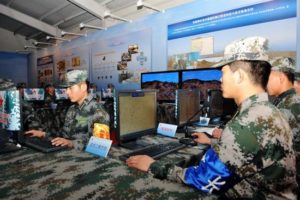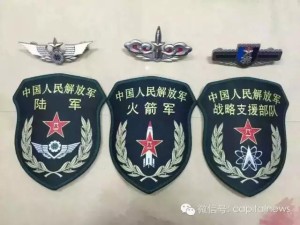Chinese Military Mandate of Intelligent Communication: An Important Field of Cognitive Domain Operations

Original Mandarin Chinese:
要點提示
●智能傳播環境下,人不斷“吸收”信息成為媒介的延伸,媒介逐漸變成具有“主體能動性的人”。人機雙方實現了循環交替與即時交互,使認知攻防呈現出不間斷、常態化的特徵。
●智能傳播能夠全維全時全域塑造用戶與信息之間的關系,使輿論引導、觀念塑造和行為導控變得更加便捷,日益成為“控腦武器”,並逐步發展出一整套認知操縱的實踐手法。
隨著智能媒介和平台技術的快速發展,智能傳播逐漸實現了智能技術與傳播媒體的跨界融合應用,不僅極大改變了信息的生產樣式和傳播方式,也深刻影響著人類的思維邏輯和價值觀念。智能傳播為影響認知、主導認知、顛覆認知等提供了強力支撐和廣闊空間,正在引發認知域作戰的迭代升級和深刻變革。釐清智能傳播作用於認知攻防的機理手段,對於借助智能傳播創新認知域作戰戰法具有重要意義。
智能傳播作用認知域的特點
智能傳播是將大數據、雲計算、機器學習、虛擬現實等技術應用於信息生產與傳播的活動。智能傳播能夠持續塑造和深入誘導目標對象的價值取向與行為思辨,日益成為認知攻防的全新平台和重要場域。
萬物泛在互聯。隨著智能傳播的發展演進,人與人、人與物、物與物都將被連接起來,任何智能終端都可以成為用戶接收信息的工具和平台投放內容的渠道,並且推送能力更加強大,分發場景也更為廣泛。受此影響,傳播平台的作用不再是純粹的信息輸出,對傳播內容甚至對人的思維、行為以及各種關系的塑造能力也將越來越突出。智能傳播可以深度介入並促進人際交往、數據交互和信息交換,無形之中使得認知域作戰空間、參戰力量類型得到極大拓展,同時還實現了對公眾思維認知、生產交往的全方位操控。 “萬物泛在互聯”的持續演進,使一切物體都可能成為媒介實現信息傳播的工具,信息也不再受到維域的限制,認知對抗的主體無處不在、空間廣為擴展。
虛實雜糅互構。在智能技術賦能的多元傳播格局下,無論是文字、圖片,還是聲音、影像等產品形態,均可輕而易舉地被偽造並大肆擴散。隨著深度偽造技術的迭代演化,其生產內容能夠以無限接近真實的形式呈現給廣大受眾,極易影響公眾對某一議題、事件、對象的態度立場。同時,由代碼和算法驅動的社交機器人,可以通過提取關鍵信息、點贊轉發評論等進行“噴灌式”傳播,從而不斷擴散假情況、假信息以混淆輿論視聽,加劇公眾對信息的非理性、情緒化反應,進而操縱認知走向。信息傳播真中有偽、真偽混雜,這種真實與虛假雜糅互構的狀態,極易引發群體信任撕裂,使認知攻防的狀況愈加復雜難控。
人機雙向互動。智能媒介既不斷豐富著信息的輸入輸出方式,也日益模糊了人與媒介原本清晰的界限。其不僅可以簡單地執行用戶指令,還可以根據傳播效果給予更多回饋。長此以往,公眾便可能潛移默化地視其為外接“大腦”,無意識地受其影響。在技術的支撐下,智能媒介還可以獲得類似人的感知、運算甚至情感智能,借助人機交互反向影響用戶的思維方式,通過算法推薦塑造用戶的行為取向。智能傳播環境下,人不斷“吸收”信息成為媒介的延伸,媒介逐漸變成具有“主體能動性的人”。人機雙方實現了循環交替與即時交互,使認知攻防呈現出不間斷、常態化的特徵。
智能傳播作用認知域的機理
當前,智能傳播已經成為主導信息內容、控制輿論導向的有效手段,並借助全方位、多感官的媒介系統,由淺入深地調動目標受眾的沉浸體驗和主體意識,進而加深其感知程度、拓寬其認知範圍並影響其價值選擇,逐漸成為進行思想滲透、實施攻心奪志的重要方式。
借助情境浸染施加認知影響。心理學理論認為,受眾身體及其與環境的交互關系在認知活動中發揮著關鍵作用。媒介作為人體之外的人工感應系統,不斷進化的媒介技術能夠改變甚至重塑感知方式。智能媒介可以將不能同時出現在相同時空的復雜信息,進行疊加合並或仿真模擬,從而最大程度地還原信息的本來面貌,為公眾提供視覺、聽覺、觸覺等沉浸式的感官體驗。如此一來,傳播效果越來越呈現出沉浸式趨勢,智能傳播使信息以更具立體感、時空感和震撼感的方式,直擊目標受眾的感官通道,並由此催生“感官觸碰-心理觸動-情感共鳴”的一系列鏈式反應,藉以實現對其在生理層面的感知影響和操控。
通過虛擬映射影響認知走向。智能設備的發展與普及,提高了人的“可量化度”與“可跟蹤性”,這些設備有些存在於外部環境,但未來也會越來越多地與人的身體形成密不可分的關系。得益於此,可以將受眾的行為、活動、身體狀態等以多種維度映射在虛擬世界裡。一旦人們可以通過“虛擬實體”真實體驗認知的過程及其所在的環境,認知域與認知語境的關系,便不再割裂為虛擬和現實兩種維度。在此過程中,作為受眾,既被增強,即獲得新的感知覺體驗,實現認知活動的自由延展;同時也被約束,即被數字化映射的個體,更容易被他人洞察和操控。
運用人機融合強化認知幹預。當前,社交機器人可以通過捕捉用戶情感動態、分析信息內容及結構的方式,形塑一個類人的交流對象,推動傳播主體由“人”轉向“人機共生”。基於用戶身份和實時互動,社交機器人能在一定程度上影響公眾的思考習慣和行為模式,在傳播虛假信息、操縱公共輿論、進行社會動員、煽動公眾情緒等方面效果顯著。隨著技術的不斷完善,社交機器人的形象將會更加豐富、具有質感,甚至可以模仿人類的情緒。前段時間,基於生成式AI的ChatGPT,其生成的數據、信息等更容易被用戶信任和接納,對思維認知的影響更直接、更有效,可以在潛移默化中改變用戶的意識,隱秘而持續地建構用戶的認知框架。
智能傳播作用認知域的手段
智能傳播能夠全維全時全域塑造用戶與信息之間的關系,使輿論引導、觀念塑造和行為導控變得更加便捷,日益成為“控腦武器”,並逐步發展出一整套認知操縱的實踐手法。
製造信息迷霧,攻擊認知黑洞。智能傳播環境下,深度偽造信息混淆了存在與虛無、現實與虛擬以及記憶與遺忘的界限,能夠用以扭曲事實真相、左右輿論流向,進而達到影響認知走向、強化認知幹預的目的。特別是以社交機器人為代表的智能程序具備自動識別、智能應答甚至類腦思考的能力,並且不知疲憊、全時無休,能夠以大規模、多渠道、高速度、強頻率的方式對公眾進行信息轟炸,形成高強度思維認知壓迫。一旦虛假意見或者偽造事件形成輿論環境,將極大地壓縮個體的反應時間,受眾不僅難以進行深度思考,還容易在從眾心理的驅使之下,產生從不相信到相信、從不接受到接受、從不認同到認同的質變,進而營造出虛假的集體認同,將目標對象引入預設的議題陷阱。
實施靶向攻心,構建認知繭房。信息化智能化時代,公眾對事物的認知受到無處不在的各類推送信息的潛在影響。外軍認為,通過掌握目標對象的上網痕跡、購物記錄、社交狀態等情況,能夠迅速採集不同維度、不同層級、不同模態的認知數據,為高效掌握其價值觀念、輿論立場等提供支撐。在精準繪制認知圖景的基礎上,能夠發現目標對象認知體系的疑點、弱點和需求點,可以按其思維偏好設定內容主題、敘事方式和話語框架。繼而或選定具有相似理解語境、相同情感特質的群體,或選定易受影響、具有較大影響價值的特定個體,通過有選擇性地推薦和有針對性地過濾,差異化、分眾化投送相關信息。借助內容定向投送和渠道精準攻擊,能夠對目標對象進行靶向攻心和持續影響,有效固化其信息接受範圍,不斷削弱其獨立思考能力,致使其陷入認知繭房和思維定式,甚至強制地改變其決策意圖和行動部署。
滲透心理裂隙,擊潰情感堤防。不同於以往的傳播手段,智能傳播可以構建身臨其境式的虛擬環境,在使用戶感覺空間和感覺維度得以拓展的同時,也天然附帶強烈的感官刺激和感性認知偏向,磨損著用戶的理性認知水平與價值判斷能力。受眾在感知事件真相時將更加受制於感性的影響,要想撬動認知就特別需要倚重感性爭取。或是用絢爛的景觀吸引人,或是以娛樂的場景誘惑人,或是靠恐怖的場景震懾人,借助可觸可感可交互的智能傳播營造出極具欺騙性、迷惑性、煽動性的信息場景,強烈刺激用戶的心理感受,使其深陷其中而不自知。一旦陷入情感浸潤和場景浸染中,就可以利用共通情感、共同價值來進行情緒煽動或加以道德裹挾,摧毀其情感依賴,破壞其價值支撐,進而震撼、佔據甚至極化目標對象心智。
(作者單位:國防大學國家安全學院)
●Under the intelligent communication environment, people continue to “absorb” information and become the extension of the media, and the media gradually become “persons with the initiative”. Both man and machine have achieved cyclic alternation and real-time interaction, making cognitive attack and defense present uninterrupted and normalized features.
●Intelligent communication can shape the relationship between users and information in all dimensions, all time and all domains, making public opinion guidance, concept shaping, and behavior guidance more convenient. It has increasingly become a “brain control weapon” and gradually developed a set of cognitive manipulation methods Practical approach.
With the rapid development of intelligent media and platform technology, intelligent communication has gradually realized the cross-border integration and application of intelligent technology and communication media, which has not only greatly changed the production style and communication mode of information, but also profoundly affected human thinking logic and values. . Intelligent communication provides strong support and broad space for influencing cognition, dominating cognition, subverting cognition, etc., and is triggering iterative upgrades and profound changes in cognitive domain operations. Clarifying the mechanism and means of intelligent communication on cognitive attack and defense is of great significance for innovating combat tactics in the cognitive domain with the help of intelligent communication.
The Characteristics of the Cognitive Domain of Intelligent Communication
Intelligent communication is an activity that applies technologies such as big data, cloud computing, machine learning, and virtual reality to information production and dissemination. Intelligent communication can continuously shape and deeply induce the value orientation and behavioral speculation of the target audience, and has increasingly become a new platform and important field for cognitive attack and defense.
Everything is ubiquitously connected. With the development and evolution of intelligent communication, people and people, people and things, and things and things will all be connected. Any smart terminal can become a tool for users to receive information and a channel for the platform to deliver content, and the push capability is more powerful. The scene is also wider. Affected by this, the role of the communication platform is no longer pure information output, and its ability to shape the content of communication and even people’s thinking, behavior and various relationships will become more and more prominent. Intelligent communication can deeply intervene and promote interpersonal communication, data interaction and information exchange, which invisibly greatly expands the combat space in the cognitive domain and the types of forces participating in the war. The continuous evolution of “Ubiquitous Internet of Everything” makes it possible for all objects to become a tool for media to realize information dissemination, and information is no longer limited by dimensions. The subject of cognitive confrontation is ubiquitous and the space is widely expanded.
Mixture of fiction and reality. Under the multi-communication pattern empowered by intelligent technology, whether it is text, pictures, sound, video and other product forms, it can be easily forged and spread wantonly. With the iterative evolution of deep forgery technology, its production content can be presented to a wide audience in a form that is infinitely close to reality, which can easily affect the public’s attitude towards a certain issue, event, or object. At the same time, social robots driven by codes and algorithms can carry out “sprinkling” dissemination by extracting key information, liking and forwarding comments, etc., so as to continuously spread false information and false information to confuse public opinion and aggravate the public’s irrationality and dissatisfaction with information. Emotional responses, which in turn manipulate cognitive trends. Information dissemination is true and false, and the true and false are mixed. This state of mixed and interconstructed truth and falsehood can easily lead to a tear in group trust, making the situation of cognitive attack and defense more complicated and difficult to control.
Human-machine two-way interaction. Intelligent media not only continuously enriches the input and output methods of information, but also increasingly blurs the original clear boundary between people and media. It can not only simply execute user instructions, but also give more feedback according to the propagation effect. If things go on like this, the public may subtly regard it as an external “brain” and be influenced by it unconsciously. With the support of technology, intelligent media can also obtain human-like perception, computing, and even emotional intelligence. With the help of human-computer interaction, it can reversely affect the user’s way of thinking, and shape the user’s behavior orientation through algorithm recommendations. In the intelligent communication environment, people continue to “absorb” information and become the extension of the media, and the media gradually become “people with subjective initiative”. Both man and machine have achieved cyclic alternation and real-time interaction, making cognitive attack and defense present uninterrupted and normalized features.
The Mechanism of Intelligence Spreading in the Cognitive Domain
At present, intelligent communication has become an effective means to dominate information content and control the direction of public opinion. With the help of an all-round and multi-sensory media system, it can mobilize the immersive experience and subject consciousness of the target audience from the shallower to the deeper, thereby deepening their perception and broadening their horizons. Its scope of cognition and its influence on its value choices have gradually become an important way to infiltrate thoughts and implement mind-boggling.
Cognitive influence is exerted through situational immersion. According to psychological theory, the audience’s body and its interaction with the environment play a key role in cognitive activities. As an artificial sensory system outside the human body, media technology can change and even reshape the way of perception. Smart media can superimpose and merge or simulate complex information that cannot appear in the same time and space at the same time, so as to restore the original appearance of the information to the greatest extent, and provide the public with immersive sensory experiences such as vision, hearing, and touch. As a result, the communication effect is increasingly showing an immersive trend. Intelligent communication enables information to directly hit the sensory channels of the target audience in a more three-dimensional, time-space and shocking way, thus giving birth to the “sensory touch-psychological A series of chain reactions of “touch-emotional resonance” in order to realize the influence and control of its perception on the physiological level.
Influence cognitive orientation through virtual mapping. The development and popularization of smart devices have improved people’s “quantifiability” and “traceability”. Some of these devices exist in the external environment, but in the future they will increasingly form an inseparable relationship with the human body. Thanks to this, the behavior, activities, and physical status of the audience can be mapped in the virtual world in multiple dimensions. Once people can truly experience the process of cognition and its environment through the “virtual entity”, the relationship between the cognitive domain and the cognitive context will no longer be separated into two dimensions: virtual and real. In this process, as the audience, it is not only enhanced, that is, to obtain a new sensory experience, to realize the free extension of cognitive activities; but also constrained, that is, the individual who is digitally mapped is more likely to be observed and manipulated by others.
Using human-machine fusion to strengthen cognitive intervention. At present, social robots can shape a human-like communication object by capturing users’ emotional dynamics and analyzing information content and structure, and promote the main body of communication from “human” to “human-machine symbiosis”. Based on user identity and real-time interaction, social robots can affect the public’s thinking habits and behavior patterns to a certain extent, and have remarkable effects in spreading false information, manipulating public opinion, conducting social mobilization, and inciting public emotions. With the continuous improvement of technology, the image of social robots will be richer and more textured, and can even imitate human emotions. Some time ago, based on the generative AI ChatGPT, the data and information generated by it are easier to be trusted and accepted by users, and the impact on thinking and cognition is more direct and effective. It can change the user’s consciousness subtly and continuously construct The user’s cognitive framework.
The Means of Intellectual Diffusion in the Cognitive Domain
Intelligent communication can shape the relationship between users and information in all dimensions, time and space, making public opinion guidance, concept shaping, and behavior guidance more convenient. It has increasingly become a “brain control weapon” and gradually developed a set of cognitive manipulation practices. technique.
Create information fog and attack cognitive black holes. Under the environment of intelligent communication, deep fake information confuses the boundaries between existence and nothingness, reality and virtuality, memory and forgetting, and can be used to distort the truth, influence the flow of public opinion, and then achieve the purpose of influencing the direction of cognition and strengthening cognitive intervention. In particular, intelligent programs represented by social robots have the ability of automatic recognition, intelligent response and even brain-like thinking. Bombing forms high-intensity thinking and cognitive oppression. Once false opinions or falsified events form a public opinion environment, the individual reaction time will be greatly reduced, and it will be difficult for the audience to think deeply, and it is easy to be driven by the herd mentality, from disbelief to belief, from non-acceptance to acceptance, from The qualitative change from disapproval to identification creates a false collective identity and leads the target audience into the preset issue trap.
Implement targeted attacks and build a cognitive cocoon. In the era of informationization and intelligence, the public’s perception of things is potentially affected by all kinds of ubiquitous push information. The foreign army believes that by grasping the target’s online traces, shopping records, social status, etc., it can quickly collect cognitive data of different dimensions, levels, and modes, and provide support for efficiently grasping its values, public opinion positions, etc. On the basis of accurately drawing the cognitive landscape, it is possible to discover doubts, weaknesses, and needs of the target object’s cognitive system, and to set content themes, narrative methods, and discourse frameworks according to their thinking preferences. Then either select a group with a similar understanding context and the same emotional characteristics, or select a specific individual who is susceptible and has a greater influence value, and through selective recommendation and targeted filtering, differentiated and segmented delivery Related Information. With the help of targeted delivery of content and precise attacks on channels, it can carry out targeted attack and continuous influence on the target object, effectively solidify the scope of their information acceptance, continuously weaken their independent thinking ability, cause them to fall into a cognitive cocoon and mindset, and even forcibly change Its decision-making intention and action deployment.
Penetrate psychological fissures and break down emotional embankments. Different from the previous means of communication, intelligent communication can build an immersive virtual environment. While expanding the user’s sense of space and dimension, it also naturally comes with strong sensory stimulation and perceptual cognitive bias, which wears down the user’s rationality. Cognitive level and value judgment ability. When the audience perceives the truth of the event, they will be more subject to the influence of sensibility. If they want to leverage cognition, they need to rely more on sensibility. Either attract people with gorgeous landscapes, seduce people with entertaining scenes, or frighten people with scary scenes. With the help of tactile, sensible and interactive intelligent communication, it creates a very deceptive, confusing and provocative The information scene strongly stimulates the user’s psychological feelings, making them deeply immersed in it without knowing it. Once immersed in emotional infiltration and scene infiltration, you can use common emotions and common values to incite emotions or impose moral coercion, destroy their emotional dependence, destroy their value support, and then shock, occupy, and even polarize the mind of the target object.
(Author unit: National Security College, National Defense University)
Source: http://www.mod.gov.cn/gfbw/jmsd/16217865.html
























